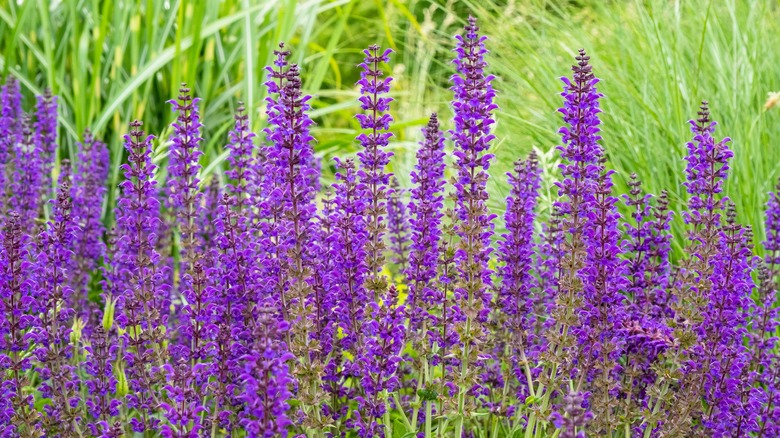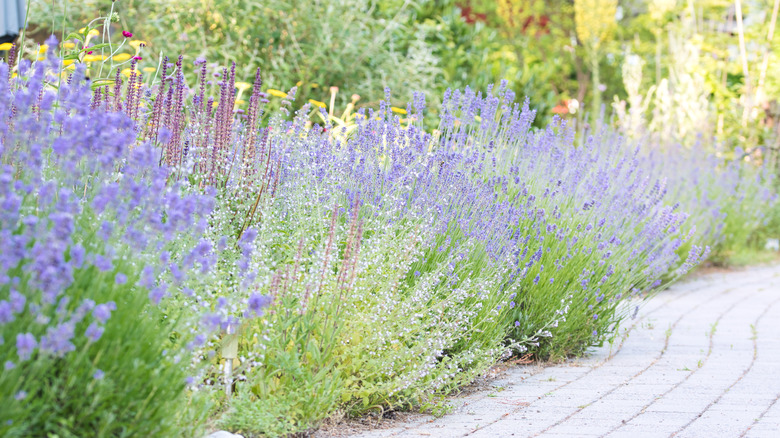How To Prune Salvia For Endless Blooms All Summer
Salvia is a showstopper in the garden with its big colorful blooms, but once those flowers finish and you cut the spent blooms off, you can be waiting quite a while for new blooms to reemerge. This doesn't have to be the case though. By cutting back just part of your salvia plant at a time, you can have almost continual blooms all summer long.
There are a truly massive number of plants in the salvia genus, including classic edible sages, ornamental annual salvias, and ornamental perennial salvias. Many species are hardy in zones 5 through 10, though the best time to prune the plants may vary by region and temperature. In addition to the culinary uses, scent, and beauty these plants have, they're also beloved by bees, butterflies, and hummingbirds. One of the best things about pruning these plants selectively so they have staggered blooms is that it ensures that there's always flowers available for pollinators.
Selectively pruning salvia blooms
As Steph from the YouTube channel Hooked and Rooted accidentally discovered, the best time to prune back parts of your salvia plant to ensure constant blooms is when the bloom stalks are a little over half spent. At this point the flowers lower on the stalks will have stopped blooming, but those higher up on the same stalk will still be bright, colorful, and covered in pollinators. This is the perfect time to cut back the blooms on about half the plant. Which section of the plant you cut back is entirely up to you and what looks best in your garden, though cutting either the front or back will probably be the most attractive options.
Once you've decided which section of your salvia to prune, simply use sharp pruning shears to remove the bloom stalks and cut back to the foliage. Within a few weeks that section of the plant will have flushed back out and begun to flower again. These flowers should appear just in time for the other half of your salvia to get a trim.
Using salvia in the garden
Salvias aren't just beautiful and good for pollinators, they're also easy to take care of. While selective pruning ensures constant blooms, the plants generally require little care as long as they are grown in an area with full or part sun. While some species of salvia are more particular and require fertile and well draining soil, many others have no problem with poor soil quality. Salvias are relatively drought tolerant as well, making them ideal plants if you live in a dry climate. Even better, salvias are generally left alone by deer, so you don't have to worry any overzealous visitors "pruning" your salvias down to nothing.
Salvias are a perfect option to plant next to lavender in the garden as both plants have similar growing needs and they complement each other beautifully. Other good neighbors for salvias include ornamental grasses and other drought tolerant herbs like rosemary, which is itself a member of the salvia genus. Because salvias are tolerant to salt, they can also make an excellent addition to coastal gardens, where they pair perfectly with the equally drought and salt-tolerant sea thrift.

